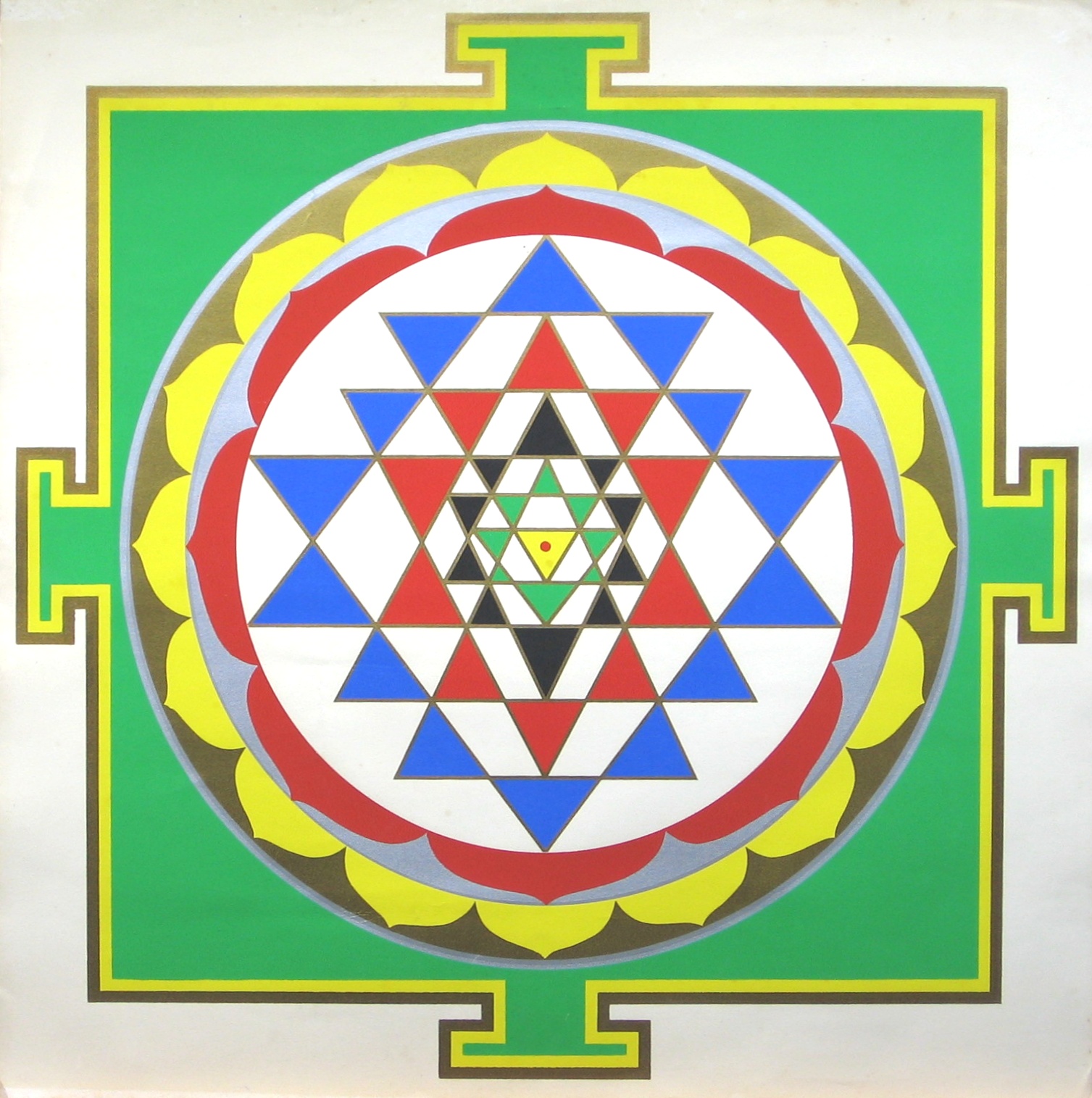Yantra yoga
This is the Sanskrit word for a mystical diagram, especially diagrams from the Tantric traditions. They are often used as an aid in meditation.
This is the Sanskrit word for a mystical diagram, especially diagrams from the Tantric traditions. They are often used as an aid in meditation.
A typical yantra is made by a geometric shape and image, along with written mantras. You can often find triangles, hexagrams, circles and lotuses up to 1,000 petals.
- Color Use of colors in traditional yantra is totally symbolic, as each color corresponds to an idea and to a inner state of consciousness. White/Red/Black is one of the most significant color combinations, representing the three qualities of nature. White represents purity; red represents the activating quality; black represents inertia. Specific colors also represent certain aspects of the goddess. Not all texts give the same colors for yantras.
- Bindu The central point of traditional yantras have a bindu, that is a point, representing the main deity associated with the yantra. The bindu in a yantra may be represented by a dot or small circle.
- Triangle Most Hindu yantras include triangles. Downward pointing triangles represent feminine aspect of God, while upward pointing triangles represent masculine aspect.
- Hexagram Hexagrams as shown in yantras are two equilateral triangles intertwined, representing the union of male and female aspects of divinity.
- Lotus Mandalas and yantras both frequently include lotus petals, which represent purity and transcendence.
- Circle Many mandalas have three concentric circles in the center, representing manifestation.
- Outer square Many mandalas have an outer square or nested squares, representing the earth and the four cardinal directions. Often they include sacred doorways on each side of the square.
- Pentagram Yantras infrequently use a pentagram.
- Octagon Octagons are also infrequent in yantras, where they represent the eight directions.











